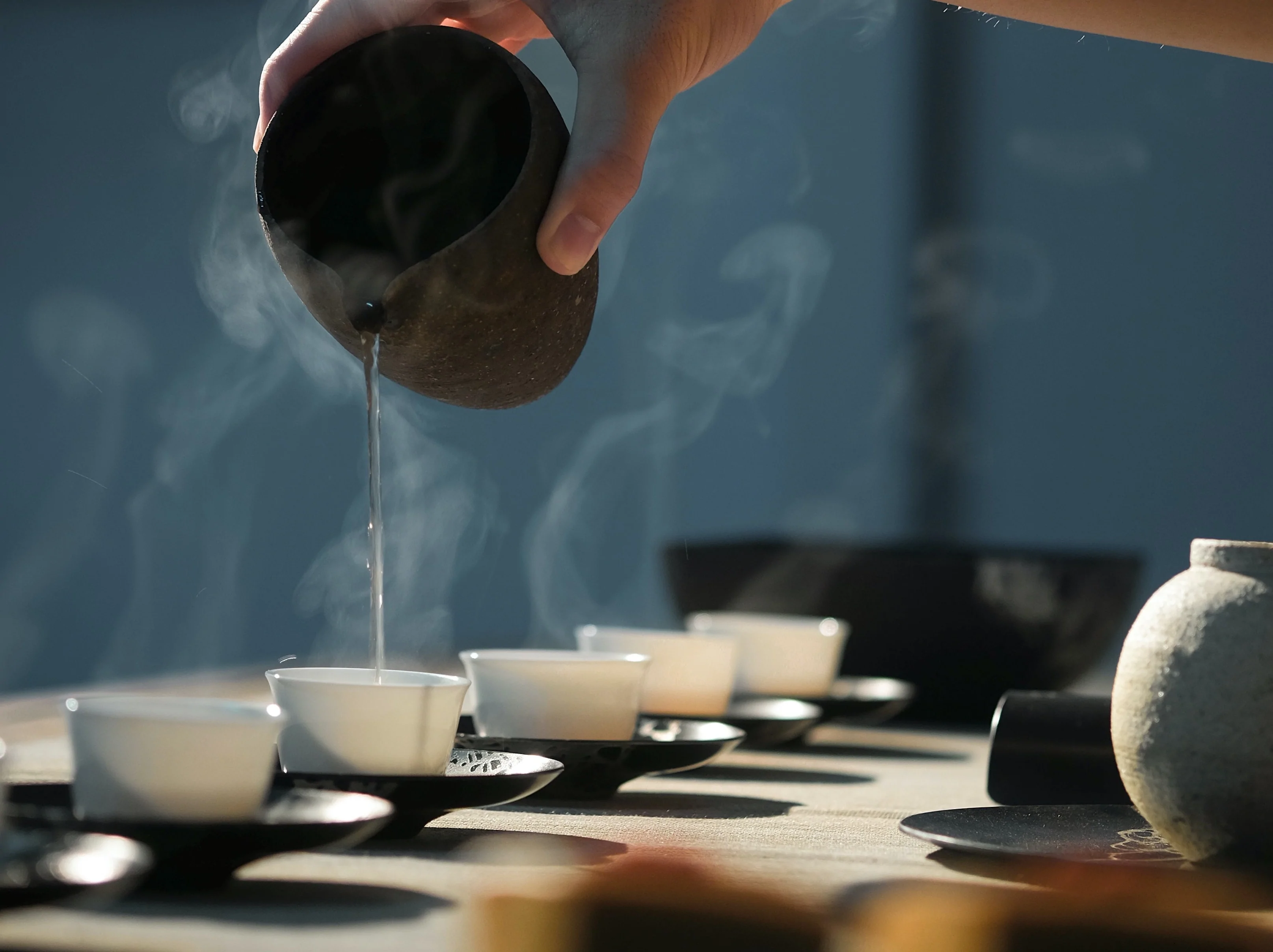How to press pause and de-stress for a moment of mindfulness with tea.
"The art of the tea way consists simply of boiling water, preparing tea and drinking it."
- Rikyū

What is Mindfulness?
Mindfulness has gained more popularity in the recent years - essentially a form of meditation. "It is a translation of sati, a word in the Pali language of ancient India - in which many original Buddhist texts were written - that can roughly be translated as 'awareness.'" (1)
Endorsed by Celebrities such as Oprah, Arianna Huffington and Katy Perry as well as many entrepreneurs, has brought mindfulness firmly into the spotlight.
Jon Kabat-Zinn is known as Father of the term. He has defined mindfulness meditation as “the awareness that arises from paying attention, on purpose, in the present moment and non-judgmentally” Known as "Mr Mindfulness in relation to the secular strand, without him, perhaps mindfulness would not have risen to the prominence it has.” (2)
How does this relate to tea?
The Japanese tea ceremony can be summed up by the Zen phrase "ichi-go ichi-e", which means "one time, one meeting". (3) The tea ceremony steeped in tradition is a fine art creating a simple experience of drinking tea in the present moment.
Tea came to Japan around the 12th Century when a Zen monk by the name of Eisai Zenji was studying in China (where tea was the national drink) brought seeds back to his own country.
Tea became an important part of the Japanese culture. It fitted in well with the life of the Zen Monks who included it as a way to stay awake during their meditations. The ritual evolved into the Tea Ceremony and for those students of Zen into a form of meditation.
Sen no Rikyū, also known simply as Rikyū, is considered the historical figure with the most profound influence on chanoyu, the Japanese "Way of Tea" with his philosophy that each meeting should be treasured, for it can never be reproduced. (4)
"First you must make a delicious bowl of tea; lay the charcoal so the water boils; arrange the flowers as they are in the field; in the summer suggest coolness, in the winter, warmth; do everything ahead of time; prepare for rain; and give those with whom you find yourself every consideration." Rikyū
What is Mindful Tea Drinking?
Bringing together the Heath benefits of tea (antioxidants, polyphenols and flavonoids) and mindfulness. A moment of calm to sooth the nervous system. We are often too much in the sympathetic nervous system (the flight or fight response) causing many adverse health issues.
"The parasympathetic nervous system acts like a brake. It promotes the "rest and digest" response that calms the body down" (5)
Adopting a daily Mindful Tea break you give your body and mind the chance to pause...and breathe...It's also a great introduction to meditation.
Living in such a fast paced world we have forgotten how to slow down and savour the moment. Finding calm and inner peace promotes physical and mental health.
How do I drink my Tea Mindfully?
1) Fill the kettle up watching the water as it goes into the kettle, listening to the sound of the water. When your kettle is boiling listen to the sound of the water as is gurgles and splutters as it boils. Be aware of all of your senses: sight, smell, touch, sound throughout the activity.
2) Take time in choosing which tea you would like to drink, ask yourself how do I feel today? How do I want to feel? What Flavours do I feel like? Take your time to smell the tea, if its loose tea even use your sense of touch and feel the tea leaves before you place them in the cup or tea pot.
3) Watch the water fill up your cup or teapot, notice the water changing colour as the tea brews. Feel the warmth of the cup or teapot underneath your hand (be careful with boiling water)
4) As your tea brews take 6 breaths in through the nose and exhaling out of the mouth as if you were breathing through a straw. Take a moment to pause and be in the moment. Notice your environment; the weight of your feet on the ground, if you’re standing or your contact with the chair or the floor, if you’re sitting down.
5) As you pour you tea notice the sound it makes as it cascades into the cup, feel the steam, notice the aroma of the tea and the warmth of the cup in your hand.
6) Mindfully take a sip of tea, allow the tea to linger in your mouth. How does it taste, do you notice any new flavours or aromas? Perhaps gently move the liquid around your mouth. Take each sip without rushing or gulping the tea.
7) Take your time to think of something you are grateful for in the present moment.
This is simply a guide, be open to the spirit of the practise and take what feel right for you.
Below is Oprah guided by Thich Nhat Hahn - a Vietnamese Buddhist Monk through his tea meditation practise.
Featured Tea pouring photo by 五玄土 ORIENTO on Unsplash
